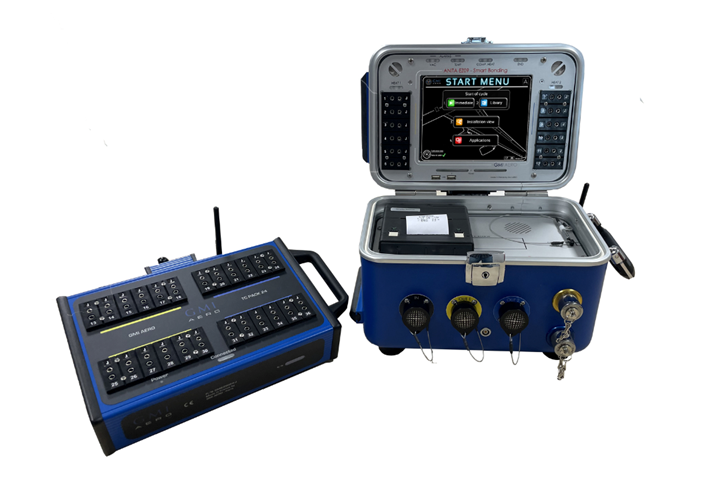GMI Aero extends Anita EZ hot bonder thermocouple capabilities
Thirty-six thermocouples (T/Cs) are now available for flexible temperature monitoring/control during composite curing.
Per the request of end-users, GMI Aero’s (Paris, France) Anita EZ hot bonder has been extended to 36 thermocouples (T/Cs). First introduced to service in 2009, Anita EZ meets temperature monitoring and control challenges for aircraft manufacturers, MROs, airlines, military forces and academic entities, with more than 500 systems operational worldwide.
On top of its innovative features, reliability and intuitive HMI, the hot bonder equipment’s success lays in its modular architecture concept, which enables it to better adapt to end-user needs. Modular extensions so far include a remote control tablet, a 12 T/C scanner and a semi-integrated vacuum pump. The addition of a 24 T/C scanner, connectable to Anita EZ wirelessly through Bluetooth or via cable, has increased the total number of T/Cs used during curing to 36.
According to the company, any of the 36 T/Cs can be used for temperature control and/or for monitoring purposes; these roles can be flexibly altered at any time during the curing cycle. A synthetic report, including all 36 T/Cs, is automatically produced at the end of the curing cycle and is available in .pdf or in .csv version, for further processing.
Ultimately, GMI Aero notes, the additional thermocouples can meet the needs of the aerospace industry, which continues to face more complex composite repairs, and SRMs, which may require thermal surveys.
This new feature is available with already-existing Anita EZ systems; users only need to procure the new 24 T/C scanner. In addition, a Thermal Mapping Application (TMApp) is available for visualization of curing or thermal survey results.
Related Content
-
Belzona coatings expand composite leading edge protection, lifespan
Belzona highlights the use of Belzona 5711 and 5721 to extend the lifespan of 42 wind turbine blades in Denmark facing severe erosion.
-
CompPair adapts HealTech composites to LCM processes
The new system, demonstrated through the manufacture of a large-scale wind turbine blade section, enables the repair and recovery of infused composite structures within minutes.
-
Determining steel/composite failure load of bonded repair assemblies
Bureau Veritas and partners use a novel equivalent interface test specimen and simulation to predict failure load in bonded composite patch repairs to steel structures.

















